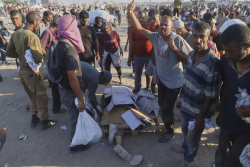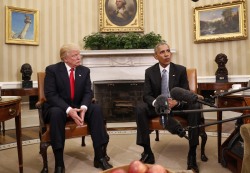Only through multifaceted strategies can we address the hidden costs of energy poverty, break the cycle of inequality, and foster true energy justice.
Since 2020, the world has seen significant improvement in access to energy, with global coverage rising from seventy-five to ninety percent of the population, according to the UN Development Program. But access alone does not guarantee a better quality of life or well-being.
This distinction has been widely examined within both the academic and policymaking communities. A growing body of literature argues that if the electricity supply is unreliable or costly, what is deemed as a developmental milestone can paradoxically become a burden for end users, as highlighted in this recent study.
As a result, the emphasis has shifted from mere access to energy toward the reliability and affordability of energy.
During COP26, the issue of “energy poverty” gained renewed prominence, particularly due to energy insecurity in Europe triggered by Russia’s war in Ukraine, as reported by the International Energy Agency (IEA).
Although universal access to clean, affordable, and reliable energy has been central to Sustainable Development Goal 7 since its adoption in 2016, a universally accepted definition of energy poverty remains elusive.
What is Energy Poverty?
The World Economic Forum defined energy poverty in 2010 as “the lack of access to sustainable modern energy services and products.” The European Commission defines it in the light of health and well-being, stating that “energy poverty occurs when a household is forced to reduce its energy consumption in ways that negatively impact their health.”
In low- and lower-middle-income countries, energy poverty is often understood as inadequate physical access to clean and modern energy, such as electricity and clean cooking fuels. In contrast, in high-income countries, the focus is on energy affordability — often referred to as “fuel poverty.”
This dichotomy highlights the need for region-specific approaches to defining and addressing energy poverty.
One common thread is clear: the issue is deeply intertwined with the socioeconomic conditions of society. As explained in this recent analysis, four key drivers shape energy poverty: energy demand, price, efficiency, and the economic conditions of the end user.
A Wide and Lasting Impact
The impact of energy poverty is significant and wide-ranging. It affects not only the financial situation of the end user but also their health, well-being, education, and even the environment. Those who endure energy poverty often experience poor thermal comfort, unsafe sanitary conditions, low air quality, and exposure to hazardous substances.
So, Where Do We Stand Today?
The IEA reports that approximately 750 million people globally still have no access to electricity, mostly in Africa and Asia. In Sub-Saharan Africa, around 600 million people lacked electricity access in 2023, compared to 107 million people in developing Asia.
While the situation is not as grave in Europe, energy poverty is growing here too. As of 2023, about forty-five million people — or 10.6% of the total EU population — were unable to keep their homes adequately warm, according to the European Commission. This marks a significant increase from 6.9% in 2021. The problem is especially severe in Central, Eastern, and Southern Europe, but it affects even affluent countries.
The Hidden Health Crisis
Understanding energy poverty means looking closely at daily life inside affected households — from how people spend their day to how they cook their meals. The World Health Organization (WHO) provided a broader perspective in its 2006 report Fuel for Life: Household Energy and Health, where the concept of the “energy ladder” was introduced.
The energy ladder shows how a household’s economic status determines its primary energy source — ranging from biomass and coal at the lower end to modern, clean fuels at the upper end.
The report also highlighted that burning biomass on open fires or basic stoves releases a range of different pollutants, such as carbon monoxide (CO), particulate matter (PM 2.5), and nitrogen oxides (NOx), exposing household members — especially women and children — to pollution levels far exceeding those found in even the world’s most polluted cities.
Lack of access to affordable modern energy comes at a terrible cost to human health and life. According to the WHO, more than three million people die prematurely each year from diseases caused by household air pollution. The breakdown is thirty-two percent due to ischemic heart disease, twenty-one percent from lower respiratory infections, twenty-three percent from stroke, nineteen percent from chronic obstructive pulmonary disease (COPD), and six percent from lung cancer.
The impacts don’t stay indoors. As polluted air escapes homes, indoor air pollution becomes a significant contributor to outdoor air pollution — causing millions more deaths globally each year.
What Can Be Done?
Energy poverty remains a daily reality for millions. But at the same time, there’s significant momentum and resources being directed at solving the problem.
Given the distinct characteristics of energy poverty in low- and middle-income and high-income countries, there is no one-size-fits-all solution.
In low- and middle-income countries, decentralized grid solutions like solar and wind power are gaining traction. Studies from Kenya and Nigeria show that solar mini-grids can significantly increase household income, improve health by replacing kerosene lamps, and empower women through better access to education and economic opportunities.
In Europe, energy cooperatives and municipal programs have successfully reduced local energy poverty through shared investments in renewable infrastructure, collective purchasing, and peer-based support. Echoing this, a 2022 scoping review suggested that community-led energy programs can have wide-reaching health and social benefits.
Home retrofitting, when combined with energy counseling, can significantly reduce household energy bills and alleviate energy poverty, as shown in this study. Another research paper highlighted the role of targeted regulatory transformation — such as subsidies for home insulation, smart meter deployment, and tiered energy pricing — in tackling energy poverty.
A Holistic Response Is Essential
Addressing energy poverty demands a holistic approach that integrates policy initiatives, technical upgrades, community participation, and financial mechanisms. Only through such multifaceted strategies can we break the cycle of inequality and foster true energy justice.
About the Author: Ananya Choudhury
Ananya Choudhury is a Research Associate at SEI York, where she contributes to projects on private sector emissions under the Clean Air Fund. She has worked on an array of projects focused on energy poverty, sustainable transport, climate adaptation and mitigation plan preparation for urban areas for India, Africa and other Southeast Asian countries, and with different UN agencies and local governments.
Image: Shutterstock/Oni Abimbola

















